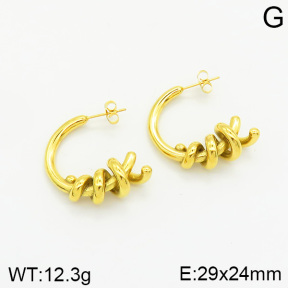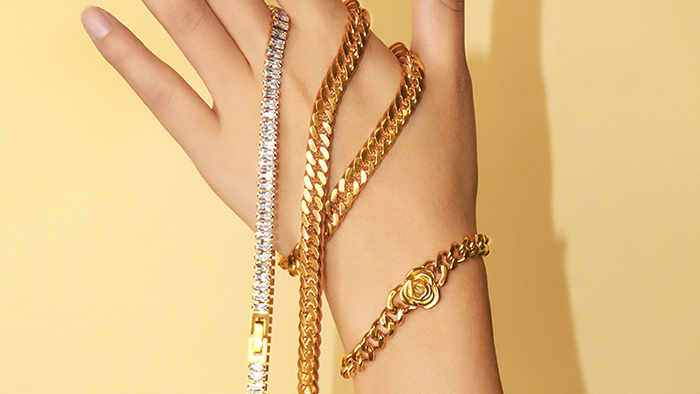The Myth and Reality of Stainless Steel Jewelry: Does Stainless Steel Jewelry Turn Green?
.jpg?x-oss-process=style/size_100_100)
Introduction
Jewelry has been an integral part of human culture for centuries, serving not only as an adornment but also as a symbol of status, beauty, and personal expression. While gold and silver have long been the traditional materials for crafting jewelry, stainless steel has gained popularity in recent years as a more affordable and durable alternative. However, there is a common misconception that stainless steel jewelry turns green?, which has raised doubts about its quality. Additionally, the advent of gold plated stainless steel jewelry has further blurred the line between authenticity and imitation. In this essay, we will delve into the world of stainless steel jewelry, addressing the concerns about it turning green and exploring the nuances of gold-plated stainless steel jewelry.
I. The Composition of Stainless Steel Jewelry
To understand whether stainless steel jewelry turns green, it is essential to first grasp the composition of stainless steel. Stainless steel is a versatile and corrosion-resistant alloy composed primarily of iron, chromium, nickel, and other elements. This alloy's remarkable qualities make it a preferred choice for various applications, including jewelry making. The chromium content in stainless steel forms a thin oxide layer on its surface, protecting it from rust and corrosion.
II. Does Stainless Steel Jewelry Turn Green?
A common misconception surrounding stainless steel jewelry is the belief that it can turn green, similar to how some lower-quality metals can cause skin discoloration. However, stainless steel's unique composition and properties make this occurrence highly unlikely. Unlike copper or brass, which can oxidize when exposed to moisture and air, stainless steel remains resistant to tarnishing and corrosion. Therefore, stainless steel jewelry does not turn green, making it a reliable option for those concerned about skin reactions or color changes.
III. Gold Plated Stainless Steel Jewelry
Gold-plated stainless steel jewelry has gained popularity as an affordable alternative to solid gold jewelry. Gold plating involves applying a thin layer of gold onto the stainless steel base through electroplating or other methods. This process allows manufacturers to achieve the appearance of real gold while keeping the cost considerably lower. Gold-plated stainless steel jewelry offers numerous advantages, such as durability, affordability, and hypoallergenic properties.
IV. The Advantages of Gold-Plated Stainless Steel Jewelry
Affordability: Gold-plated stainless steel jewelry provides a budget-friendly option for individuals who desire the luxurious look of gold without the high price tag. It allows consumers to enjoy the aesthetic appeal of gold jewelry without compromising their financial well-being.
Durability: One of the key advantages of gold-plated stainless steel jewelry is its durability. The stainless steel base resists scratches, tarnishing, and corrosion, ensuring that the gold layer remains intact for an extended period. This durability makes gold-plated stainless steel jewelry ideal for everyday wear.
Hypoallergenic Properties: People with sensitive skin often experience allergic reactions to certain metals commonly used in jewelry, such as nickel. Gold-plated stainless steel jewelry is hypoallergenic, as it contains no nickel and is less likely to cause skin irritations or allergies.
Versatility: Gold-plated stainless steel jewelry comes in a wide range of designs and styles, catering to diverse tastes and preferences. Whether you prefer classic, modern, or unique pieces, you can find gold-plated stainless steel jewelry to match your style.
V. Maintaining Gold-Plated Stainless Steel Jewelry
To ensure the longevity and luster of gold-plated stainless steel jewelry, proper care is essential. Here are some tips for maintaining your gold-plated stainless steel pieces:
Avoid exposure to moisture: Water and humidity can accelerate the wear and tear of gold-plated jewelry. Remove your jewelry before swimming, showering, or engaging in activities that may expose it to moisture.
Minimize contact with chemicals: Harsh chemicals, such as those found in household cleaning products, can damage the gold plating on your jewelry. It is advisable to remove your jewelry before using such chemicals and to store it in a safe place.
Store properly: When not in use, store your gold-plated stainless steel jewelry in a cool, dry place, away from direct sunlight. It is best to keep each piece in a separate pouch or compartment to prevent scratches.
Clean gently: Use a soft, lint-free cloth to gently wipe your jewelry clean after each wear. Avoid abrasive materials that may scratch the gold plating.
Conclusion
In conclusion, the myth that stainless steel jewelry turns green is unfounded. Stainless steel's composition and unique properties make it highly resistant to tarnishing and discoloration. Therefore, stainless steel jewelry is a reliable choice for those seeking durability and hypoallergenic properties.
Furthermore, the advent of gold-plated stainless steel jewelry has expanded the options available to consumers. Gold-plated stainless steel offers affordability, durability, and a luxurious appearance, making it an attractive alternative to solid gold jewelry. By following proper care guidelines, individuals can enjoy their gold-plated stainless steel jewelry for years to come without compromising its beauty or quality.
In the world of jewelry, stainless steel has proven itself as a versatile and reliable material, debunking the myth of green discoloration and offering a wide range of stylish options for jewelry enthusiasts. Whether you choose traditional stainless steel or opt for the allure of gold-plated stainless steel, you can do so with confidence, knowing that your jewelry will retain its beauty and integrity.








